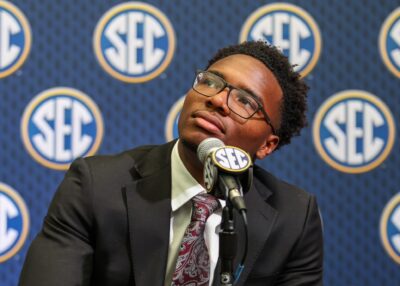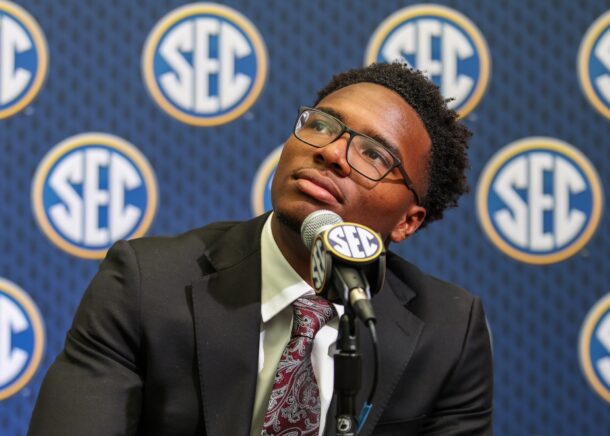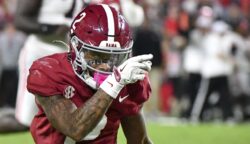It was one of those kinds of announcements that most college football fans pay little attention to, but was as important, if not more so, than anything that happens on the field this fall.
In late October the National Collegiate Athletic Association released its annual Graduation Success Rate (GSR) figures, which showed that 84 percent of student-athletes who entered college in 2007-08 had earned a degree within six years. It was a two percentage-point increase over last year’s previous high mark.
This wasn’t the Academic Progress Rate (APR), which measures if active athletes are on pace to graduate, but the actual statistics. They’re also the first graduation numbers for only Nick Saban-coached football players as he arrived at the University of Alabama in 2007 – although many were obviously holdovers from the previous coaching regime.
“We were 80 percent graduation rate,” Saban said. “That’s a really, really good feat for us. It speaks volumes of how successful we’re being with one of the goals that we have which is for players to develop a career off the field. That’s the No. 1 goal and objective when they come to school here is that they graduate. They’ve got a lot more days ahead of them when they’re not going to play football than when they are, regardless.”
“I think that’s especially significant relative to the number of guys who we’ve had come out early for the draft, all of whom would have graduated on time or before if they would have stayed in school. That’s really a good number that we were able to hit.”
Among the 14 Southeastern Conference schools the 80 percent was a very-close second to Florida, and it ranked among the top 25 nationally in the Football Bowl Subdivision.
Meanwhile, Alabama athletics as a whole came in at 91 percent, which topped the league. The Crimson Tide led, or was tied for first in the SEC in seven different sports, including the two-time defending NCAA champion men’s golf team with a perfect 100. Matching that score were the women’s golf, soccer, softball, women’s tennis, volleyball and men’s swimming and diving teams.
“We are extremely proud to lead the Southeastern Conference in this vital area,” Director of Athletics Bill Battle said in a statement. “This is just another example of the balance between academic and athletic excellence that we strive for every day.”
The GSR is one of three important measuring sticks for measuring academic success among student-athletics, along with the Academic Success Rate (ASR) and the APR. The federal government also monitors graduation rates, but counts anyone who might have transferred (and possibly earned a degree elsewhere) as having not graduated from their original institution.
The GSR allows schools to subtract student-athletes who leave as long as they would have been academically eligible to compete had they remained.
Last year Alabama football came in at 75 percent, which was third best in the league and up six points from the previous year. If the team’s APR scores are an accurate indication the Crimson Tide will be on solid academic footing for years to come.
Specially, the APR measures how well student-athletes are on pace to graduate on time using a scale of 1,000. A 950 score is pretty much considered average while anything under 930 can lead to penalties.
In May, Alabama’s latest released score, which was for 2012-13 and the three previous academic years, was 975. Missouri and South Carolina were the only SEC schools to score better, both at 980.
Overall, every Crimson Tide program beat the national average, with 14 teams at 980 or better. Three were recognized as being in the top-10 percent: men’s golf, women’s tennis and women’s golf – all of which have recently won a national title.
Eight Crimson Tide teams ranked among the top three in their respective sports in the SEC. Baseball, men’s and women’s golf, soccer and women’s tennis were all first, gymnastics was second while men’s outdoor track and field joined football in third.
“We also saw 16 of our teams equal or improve their four-year averages from a year ago,” Associate Athletic Director for Student Services Jon Dever said. “All told, nine of our teams bettered the national average for their sport by 10 points or more, and five, football, men’s basketball, men’s and women’s golf and women’s tennis, bettered the national average by 15 points or more.”
As for this year’s football team, even though the Crimson Tide only has 14 scholarship seniors on the roster it has 15 players who have already earned their degrees.
That’s tied with Boston College for the most in the Bowl Subdivision, while Cincinnati, Minnesota and Utah State all have 13 this season. Second among SEC teams is South Carolina with nine.
Over the past seven years Alabama players who are still active on the football roster have earned 117 degrees, graduate and undergraduate.
“My undergrad was business management and my master’s degree is in sports management,” senior safety Nick Perry said.
He’s one of seven active Crimson Tide players, five scholarship and two walk-ons, finishing up their master’s degrees this fall including guard Arie Kouandjio (economics), who was nominated for the William V. Campbell Trophy.
The award, which Alabama’s Barrett Jones won in 2012, recognizes an individual as the absolute best scholar-athlete in the nation. Just to be a candidate a player must be a senior or graduate student in his final year of eligibility, have a grade point average of at least 3.2, and, according to the National Football Foundation website, have “outstanding football ability as a first team player and have demonstrated strong leadership and citizenship.”
Tackle Austin Shepherd (marketing) and tight end Brian Vogler (sports management), are due to receive their master’s degrees next month as well.
“Just working on that, finishing up school, and getting that second degree down,” said senior fullback Jalston Fowler, who is poised to earn the same master’s degree as Perry. “Pretty hard, but I’ve got people helping me. That public speaking just gets me every time.”
Christopher Walsh has covered Alabama football since 2004 and is the author of 19 books. In his free time, he writes about college football.







